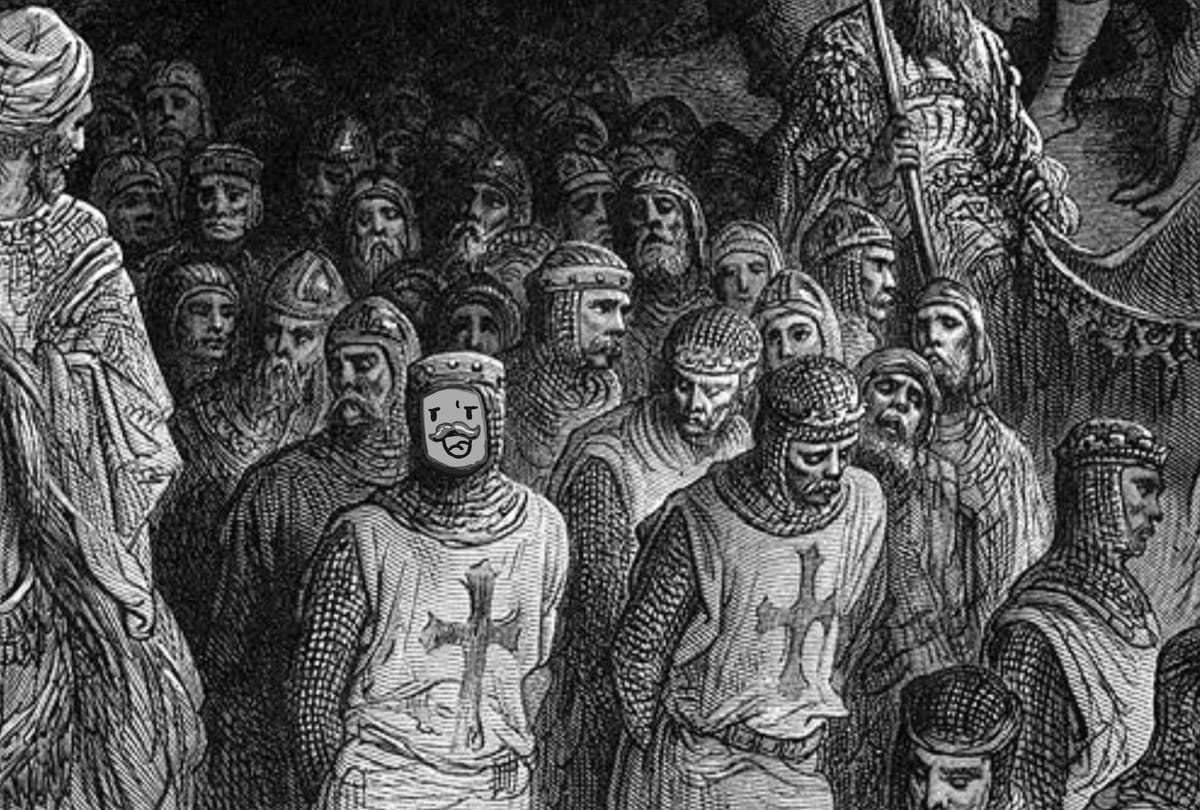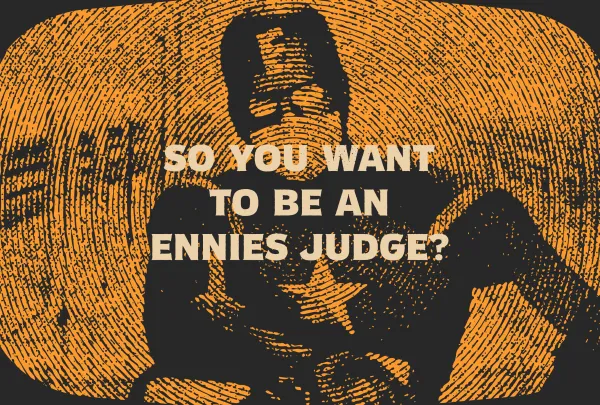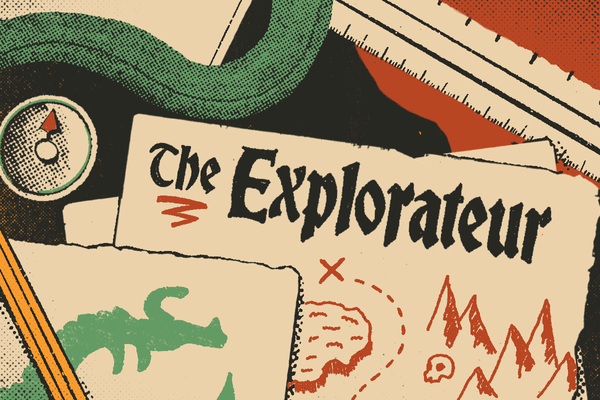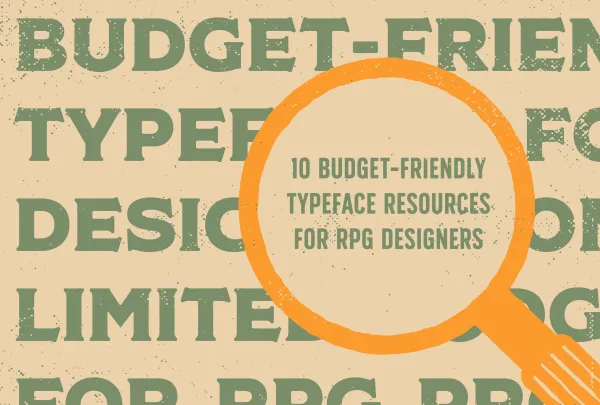Game Design by Abstraction
How to design by focusing on essentiality in roleplaying games—a fun design exercise.

Why we abstract things.
Abstraction is the process of reducing or eliminating something's characteristics until it has only essential characteristics. In other words, when something is abstracted, it becomes a conceptual, more iconic version of itself built on the thesis of the thing—rather than its literal depiction.
In art, this is the smiley face. It lacks the details of an individual but represents faces in an easy-to-understand way. The abstracted face is also easier to modify, build on, and convey to others. If you gave kids a Remembrandt and asked them to make the painted man angry—they'd probably struggle. But if you gave kids a smiley face, they'd know exactly what to do.
Abstraction is the key to communication. Humans likely started abstracting things over 50,000 years ago when we started naming things like rock, stick, fire, etc.
Okay, but what about games?
You might think this concept is the same as simplifying a design, but abstraction doesn't necessarily result in the simplest design. The goal of abstraction (for this exercise, at least) is to create a model with essential elements.
Said another way: the goal isn't to have the fewest things possible. The goal is for everything to serve up the core idea. The designer defines "essential" as anything that serves their goals. It can be essential to a genre, a play culture, an audience, or an idea. The thing doesn't matter. All that matters is consistency.
Board games have turned this into an art form. Without abstraction, board games would be less focused, take longer to play, and cost more to manufacture. Let's look at a game most board gamers (me included) are tired of talking about. Catan. For those who don't know, Catan, or "Settlers of Catan," is a board game about building a settlement, controlling land, and trading resources like brick, lumber, wood, wool, and ore.
If it were about literal trade, Catan would be more specific, precise, and "realistic." But most people don't enjoy comparing wool type, weight, age, and efficacy against different kinds of timber, their dimensions, grain, and ease of transport. Instead, Catan has abstracted its trade to focus on negotiation and the deployment of resources. The simplified model glosses over inessential elements while making other elements essential, like the placement of settlements and the constant back and forth between players.
Let's return to roleplaying games.
When a ranger fires an arrow in D&D, the attack roll against the orc's AC is a simplified model for calculating the outcome—it spares the players from calculating wind, air pressure, vector, velocity, and momentum. However, with AC, hit points, and attack rolls, the game still highlights elements like equipment, skill, and combat with stalemates, mixed success, and delayed consequences.
By comparison, Into the Odd abstracts its combat differently. By removing roll-to-hit, the game makes rounds of whiffs and ineffectual strikes non-essential. It's not just "eliding" those moments within combat—it removes them entirely. It's reasonable to suggest this is an example of simplification, but that would imply they have similar intents and goals. The two games have different goals and model different kinds of play they deem essential.
But a game isn't just the rules!
This whole article lives and dies on one assumption: that what we put into a game's text matters. Rules, procedure, art, etc.
But let's address the elephant in the room: The game and the gameplay are not necessarily the same thing. Design by any method usually only creates rulebooks. The rules, art, and physical design can be used, ignored, botched, or stuffed into other games. And those elements can spark freeform make-believe, structure conversations, or handwave certain scenarios.
This is another reason why abstraction isn't necessarily simplification. A model that focuses on essentials might deem automating something with many rules essential. The outcome can be "crunchy" or "complicated."
Designing a game by abstraction.
Confession time: I've been hacking the hell out of Mothership and Mausritter at my table. I love playing games as-written, but after a couple of years, that familiar designer voice started asking, "What if we made a few changes?"
Initially, I bolted things on. I added a few rules, items, and subsystems—but that only expanded on the things I loved without removing the themes that weren't working for my table. So, I started designing by subtraction—until finally, I started designing from nothing except my idea of Mothership and Mausritter.
This is my current design process/thought exercise...
Step 1: Identify what the game is about.
Start with the game's themes, then ruthlessly cut or re-design anything that doesn't serve them. If the game is about sci-fi horror, the mechanics should set the scene for horror, ratchet up the tension, or get out of the way. The same goes for the art, page size, typesetting, and everything else we control.
This has been the most rewarding part of the process because it demands I re-examine my relationship with small stuff I take for granted. Is there an invisible relationship between innocuous things? The answer is often yes!
Questions to ask ourselves:
- What is this game about? Excise all visual motifs and tropes belonging to its genre. What's left? Is Mausritter about fantasy adventurers who are mice, or is it about mice on a fantasy adventure? There's a subtle difference.
- What do we want players to feel? The easy answer is generic. The better answer is specific. "Horror" will work in a pinch, but "that feeling when you look into a dark basement" is infinitely better.
- What do we want players to do? Not characters; players. Specificity is everything. "Investigate" is less interesting than "Collect and sort clues." The weirder the thing is, the more compelling the models become.
Step 2: Focus on the essentials.
If abstraction is the goal, I want the game's first version to deliver on the themes with the fewest parts possible. Few games stop at the core idea, but the strategy is to start with the core premise. Many board games, for example, are so simple in their construction that the "gameplay" is almost impossible to predict before starting. I always loved those games. If you're interested in what I mean, check out Skulls & Roses or Two Rooms and a Boom.
Questions to ask ourselves:
- What conversations do we want to create? The conversations don't have to be rules-related. They can be at the table or long after the game is done. Do players talk about the combat? Characters? Mystery? Remove any designs that don't lead to these conversations we're hoping for.
- What is being borrowed and why? In this craft, most games are borrowed from other games. What are those games about, and how do those themes match or clash with our game's themes? Some imported systems have baggage.
- Does this design work with less? In other words, "Can I get away with no health in a sci-fi horror game?" The answer might be yes. Resist the temptation to match other games in their general structure and content. The extras can always live in the next adventure, module, or supplement.
Step 3: Build out from the core elements.
The purpose of abstraction is to create a model whose components are so crucial that any additional reduction would destroy the whole thing. After that, we can add toys in a more thoughtful way. In my experience, innovations or extensions of a core idea are often more compelling than ones made separately.
Questions to ask ourselves:
- Do any new additions conflict with the core idea? Sometimes, the fun mechanic is antithetical to everything else. That doesn't mean we have to remove it—but if it muddles the core idea—maybe we should. I've killed many of my darlings in service of my table's game.
- Do the core themes have natural extensions? The abstract model should feel like a prompt. If a mouse, for example, isn't defined by its strength, what can it be defined by? Are there rules, systems, or fiction that we can create?
- Do we need to remove by addition? In other words, does the game need rules to negate or handwave emergent behaviors? This could be necessary for popular genres, like horror, where characters tend to get weaker (and the players less motivated) as the scenario progresses.
Final thoughts on abstraction.
In the coming months, I might use my ongoing projects as excuses to talk about design. I might even share some gameable pieces, seeing as they're so closely related to their inspiration.
In the meantime, I'm curious to hear what others think about abstraction as a concept in their game design. It's not new; "designing to a theme" is more or less how most games are made at some point. What I do find novel is how this process forces creative problem-solving. If my goal is to make a game like Mausritter, for example, how can I ensure everything somehow reinforces what I'm modeling?
for
I'm curious about what you define as "essential" in your current project. Hit me up in the comments, on Discord, or on social media.
Until next time, never stop exploring.




